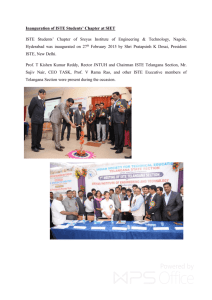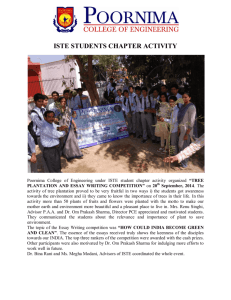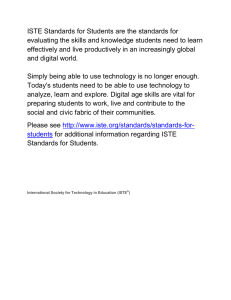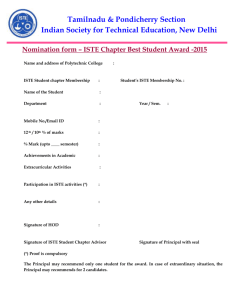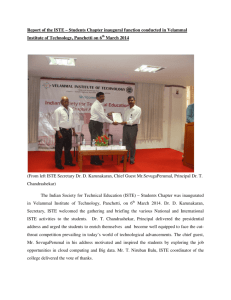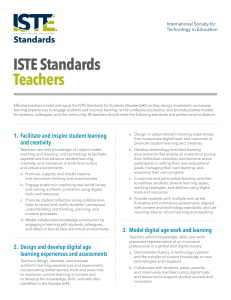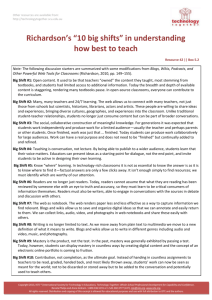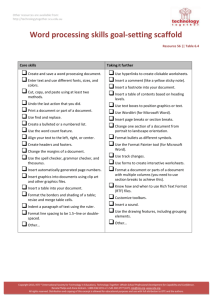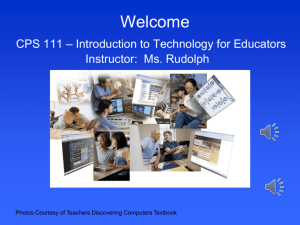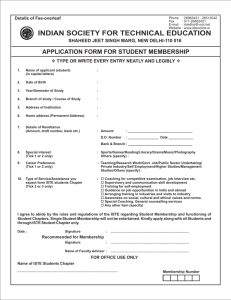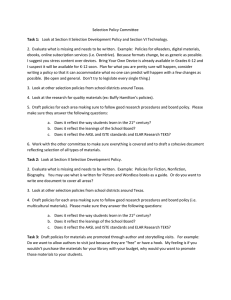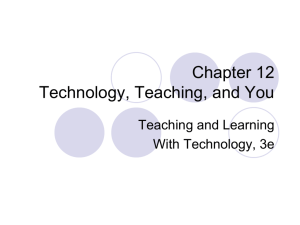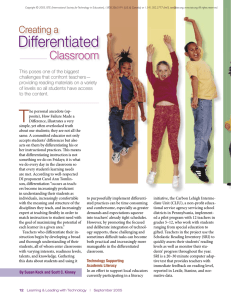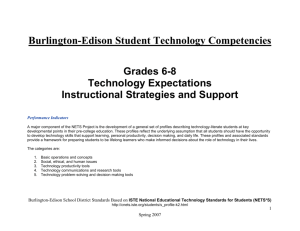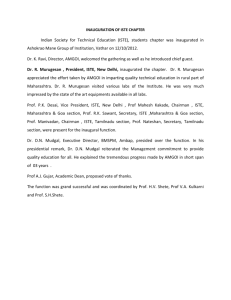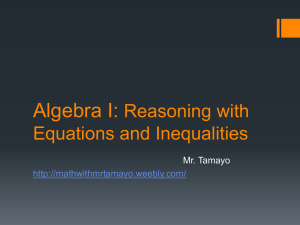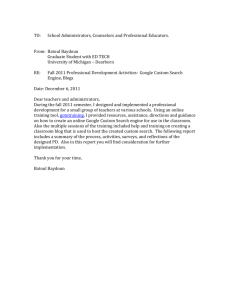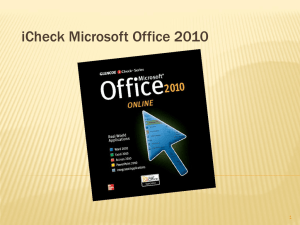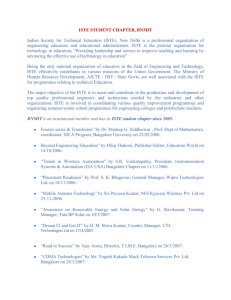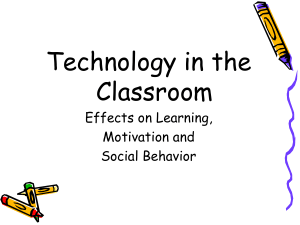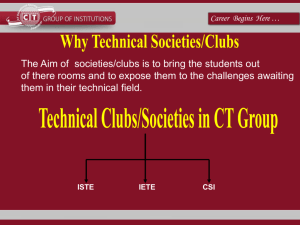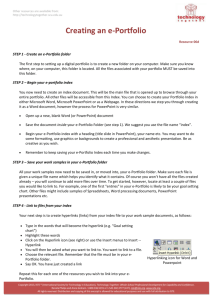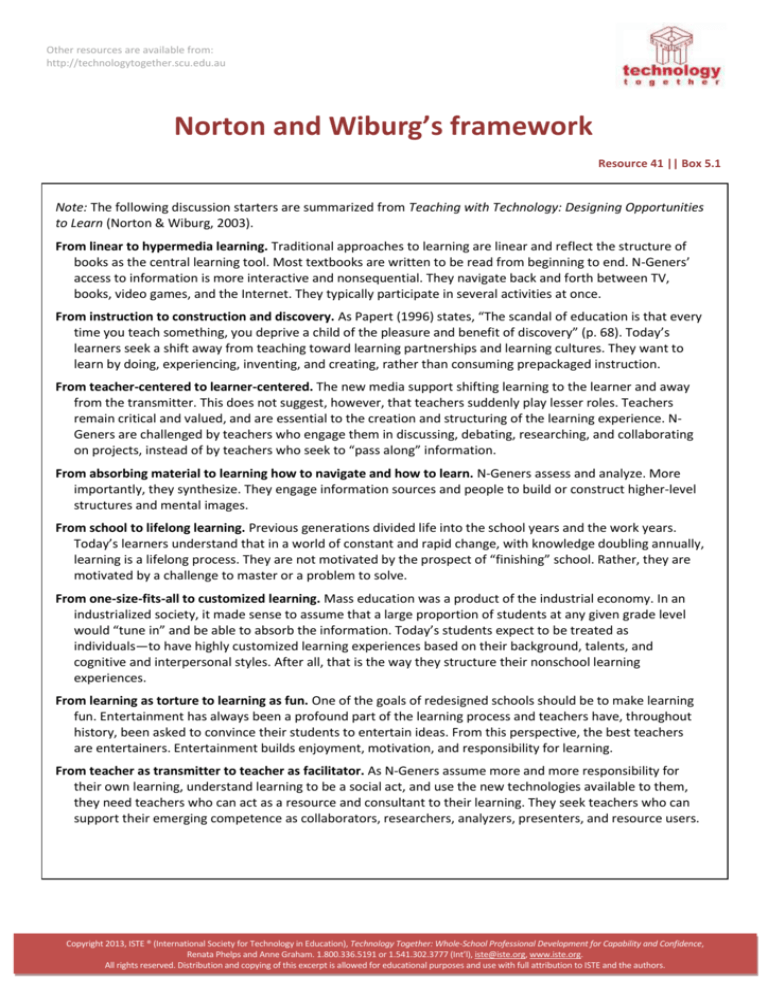
Other resources are available from:
http://technologytogether.scu.edu.au
Norton and Wiburg’s framework
Resource 41 || Box 5.1
Note: The following discussion starters are summarized from Teaching with Technology: Designing Opportunities
to Learn (Norton & Wiburg, 2003).
From linear to hypermedia learning. Traditional approaches to learning are linear and reflect the structure of
books as the central learning tool. Most textbooks are written to be read from beginning to end. N-Geners’
access to information is more interactive and nonsequential. They navigate back and forth between TV,
books, video games, and the Internet. They typically participate in several activities at once.
From instruction to construction and discovery. As Papert (1996) states, “The scandal of education is that every
time you teach something, you deprive a child of the pleasure and benefit of discovery” (p. 68). Today’s
learners seek a shift away from teaching toward learning partnerships and learning cultures. They want to
learn by doing, experiencing, inventing, and creating, rather than consuming prepackaged instruction.
From teacher-centered to learner-centered. The new media support shifting learning to the learner and away
from the transmitter. This does not suggest, however, that teachers suddenly play lesser roles. Teachers
remain critical and valued, and are essential to the creation and structuring of the learning experience. NGeners are challenged by teachers who engage them in discussing, debating, researching, and collaborating
on projects, instead of by teachers who seek to “pass along” information.
From absorbing material to learning how to navigate and how to learn. N-Geners assess and analyze. More
importantly, they synthesize. They engage information sources and people to build or construct higher-level
structures and mental images.
From school to lifelong learning. Previous generations divided life into the school years and the work years.
Today’s learners understand that in a world of constant and rapid change, with knowledge doubling annually,
learning is a lifelong process. They are not motivated by the prospect of “finishing” school. Rather, they are
motivated by a challenge to master or a problem to solve.
From one-size-fits-all to customized learning. Mass education was a product of the industrial economy. In an
industrialized society, it made sense to assume that a large proportion of students at any given grade level
would “tune in” and be able to absorb the information. Today’s students expect to be treated as
individuals—to have highly customized learning experiences based on their background, talents, and
cognitive and interpersonal styles. After all, that is the way they structure their nonschool learning
experiences.
From learning as torture to learning as fun. One of the goals of redesigned schools should be to make learning
fun. Entertainment has always been a profound part of the learning process and teachers have, throughout
history, been asked to convince their students to entertain ideas. From this perspective, the best teachers
are entertainers. Entertainment builds enjoyment, motivation, and responsibility for learning.
From teacher as transmitter to teacher as facilitator. As N-Geners assume more and more responsibility for
their own learning, understand learning to be a social act, and use the new technologies available to them,
they need teachers who can act as a resource and consultant to their learning. They seek teachers who can
support their emerging competence as collaborators, researchers, analyzers, presenters, and resource users.
Copyright 2013, ISTE ® (International Society for Technology in Education), Technology Together: Whole-School Professional Development for Capability and Confidence,
Renata Phelps and Anne Graham. 1.800.336.5191 or 1.541.302.3777 (Int’l), iste@iste.org, www.iste.org.
All rights reserved. Distribution and copying of this excerpt is allowed for educational purposes and use with full attribution to ISTE and the authors.

